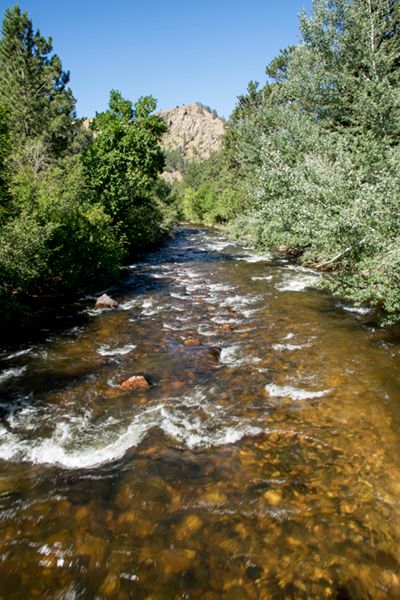What is the Halligan Water Supply Project?#
The Halligan Water Supply Project will increase Halligan Reservoir’s capacity by building a replacement dam immediately downstream of and adjacent to the current dam, providing approximately 8,200 acre-feet of additional water storage for Fort Collins Utilities. The project will meet the demand of future Utilities’ water customers and provide increased reliability for existing customers to help protect against reductions in water availability and delivery related to prolonged drought and emergencies.
Providing a Safe, Reliable Water Supply#
Unlike other cities on the Front Range, Fort Collins has a limited capacity to store the water it owns.
The increased storage capacity will:
- Meet future water demands of the Fort Collins Utilities water service area
- Increase drought security
- Provide a reserve for emergency water supply disruptions
- Improve water system reliability and flexibility
Expanding an Existing Reservoir#

Halligan Dam
Halligan Reservoir is an existing reservoir on the North Fork of the Poudre River. The North Poudre Irrigation Company (NPIC) owns the current water stored in the reservoir and operates the existing dam. The City of Fort Collins owns the existing dam and immediate surrounding property.
The current dam was built in 1909. This project takes advantage of the opportunity to increase water storage while addressing the needs of the aging dam. The current dam is structurally sound and safe; however, due to its age, it will need repairs in the future, with or without expanding the reservoir.
The project will increase Halligan Reservoir’s capacity from approximately 6,400 acre-feet to roughly 14,600 acre-feet. For reference, that’s one-tenth the volume and one-fifth the area of Horsetooth Reservoir. Halligan Reservoir's expanded capacity will provide the City about 8,200 acre-feet of additional water to be used during dry years and prolonged drought to supplement Utilities’ water supply.
The City owns enough water rights to fill the enlarged portion of the reservoir without purchasing any additional rights. This water currently flows downstream unused because there is no place to capture and store it for dry years.
The additional water supply will come from winter and spring runoff during the high runoff months. Water will not be diverted for this project during the low-flow months and when water is scarce. As part of the project, the City will release minimum flows from the reservoir year-round, allowing for continual flows on the North Fork where it currently often runs dry. If expanded, the reservoir will be drawn down significantly only during prolonged drought.
Environmentally Responsible#

Poudre River
The City has a strong stewardship ethic that provides the foundation for the management of current and future water use in the Poudre Basin. That strong ethic has been a driving force throughout the permitting process, guiding decisions around environmental mitigation and benefits. We're also taking into account what the surrounding communities have said and looking at how we can make this the best project to meet our community's needs.
Any project of this nature has environmental impacts, but Halligan has been designed to minimize impacts to the extent practicable and mitigate or enhance the environment to balance impacts and improvements. Measures are currently being incorporated to minimize the construction footprint and construction activities to reduce impacts on neighbors and wildlife during construction. Fort Collins developed a Fish and Wildlife Mitigation and Enhancement Plan that summarizes the various methods Fort Collins plans to use to minimize impacts related to the project and to mitigate impacts and enhance the existing conditions.
The City is committed to finding ways to minimize project impacts and provide a net benefit to the environment. This commitment, combined with the various permitting processes required for project approval, takes many years, resulting in the lengthy permitting timeline but an overall better project.